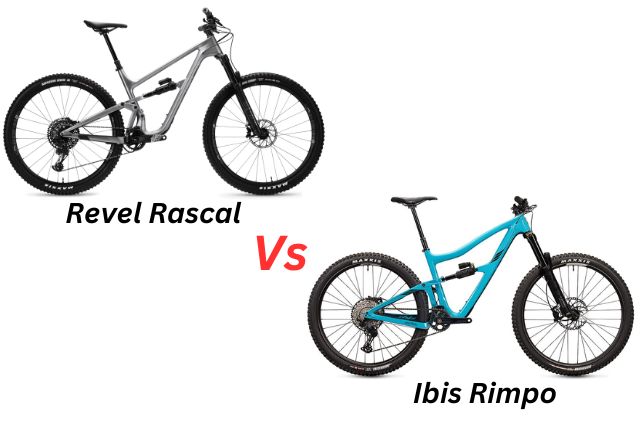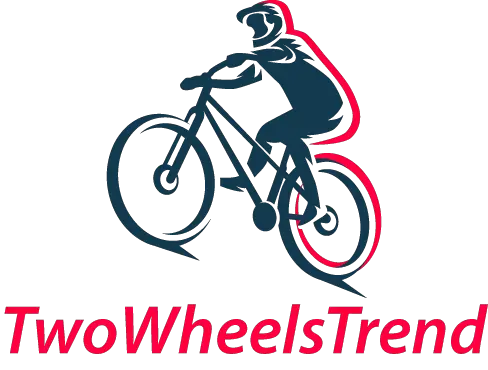
Revel Rascal and the Ibis Ripmo are both highly rated by riders and reviewers alike, but they have some differences that may suit different preferences and riding styles.
Here, we’ll compare the Revel Rascal and the Ibis Ripmo in terms of their geometry, suspension, components, performance, and price, to help you decide which one is better for you.
Geometry
The Revel Rascal and the Ibis Ripmo have similar geometry numbers, but there are some subtle differences that affect how they feel on the trail.
The Rascal has a slightly shorter reach (460 mm vs 475 mm in size large), a steeper head tube angle (66 degrees vs 64.9 degrees), and a slacker seat tube angle (75 degrees vs 76 degrees). The Ripmo has a longer wheelbase (1238 mm vs 1216 mm), a lower bottom bracket (337 mm vs 341 mm), and more rear travel (147 mm vs 130 mm).
These differences Shows that the Rascal is more agile and responsive, while the Ripmo is more stable and confident. The Rascal is easier to maneuver in tight corners and technical sections, while the Ripmo is more composed at high speeds and on steep descents. The Rascal has a more upright pedaling position, while the Ripmo has a more stretched out and efficient one.
Related: Ibis Ripley AF vs. Ripmo AF: Compared
Suspension
Both bikes use a dw-link suspension design, but with different variations.
The Rascal uses the CBF (Canfield Balance Formula) system, which claims to optimize anti-squat and anti-rise throughout the travel range, resulting in a bike that pedals well and absorbs bumps smoothly. The Ripmo uses the Traction Tune system, which uses lighter damping and spring rates to increase sensitivity and traction.
These bikes have excellent suspension performance, but they have different characteristics. The Rascal has a more linear and plush feel, while the Ripmo has a more progressive and supportive feel. The Rascal is more forgiving on rough terrain, while the Ripmo is more poppy and playful. The Rascal has less pedal bob, while the Ripmo has more small bump compliance.
Components
The Rascal and Ripmo come with a range of build options, but for this comparison, We’ll use the GX versions of each bike.
Rascal GX
The Rascal GX costs $5,999 and comes with a SRAM GX Eagle drivetrain, SRAM G2 RSC brakes, RockShox Pike Ultimate fork, RockShox Super Deluxe Ultimate shock, Industry Nine 1/1 Enduro S wheels, Maxxis Minion DHF/DHR II tires, RockShox Reverb Stealth dropper post, Anvl Forge saddle, Anvl Mandrel handlebar, Anvl Swage stem, and Anvl Tilt pedals.
Ripmo GX
The Ripmo GX costs $5,399 and comes with a SRAM GX Eagle drivetrain, Shimano Deore XT M8120 brakes, Fox Float 36 Performance fork, Fox Float DPX2 Performance shock, Ibis S35 Aluminum wheels, Maxxis Assegai/Minion DHR II tires, Bike Yoke Revive dropper post, WTB Silverado saddle, Ibis 800mm Carbon handlebar, Ibis 31.8mm stem, and no pedals.
Both bikes have high-quality components that work well for trail riding; hence there are some differences that may affect your preference.
The Rascal has better brakes, wheels, dropper post, saddle, and pedals than the Ripmo. The Ripmo has a slightly better fork and shock than the Rascal. The Rascal has more aggressive tires than the Ripmo. The Ripmo has a wider handlebar than the Rascal.
Performance
Both bikes are excellent performers on the trail, but they have different strengths and weaknesses. The Rascal is better for riders who value agility, responsiveness, comfort, and forgiveness. The Ripmo is better for riders who value stability, confidence, efficiency, and playfulness.
The Rascal is more fun on flowy trails with twists and turns, where it can carve corners and pop off features with ease. The Ripmo is good on gnarly trails with drops and jumps, where it can plow through obstacles and boost off lips with confidence.
The Rascal is more comfortable on long rides with lots of climbing and descending, where it can pedal efficiently and smoothly without sacrificing traction or control. The Ripmo is more comfortable on short rides with lots of speed and adrenaline, where it can sprint and charge without losing momentum or composure.
Also Read: Pivot Trail 429 vs. Ibis Ripley: Compared
Price
The Rascal GX costs $5,999, while the Ripmo GX costs $5,399. That’s a difference of $600, which may or may not be significant for you. The Rascal has some advantages over the Ripmo in terms of components, but the Ripmo has some advantages over the Rascal in terms of suspension. The price difference may reflect these differences, or it may reflect other factors such as brand reputation, availability, or demand.
Ultimately, the price is only one factor to consider when choosing a bike. You should also consider your personal preference, riding style, terrain, and budget. Both bikes are great value for money, but they may not be the best fit for everyone.
